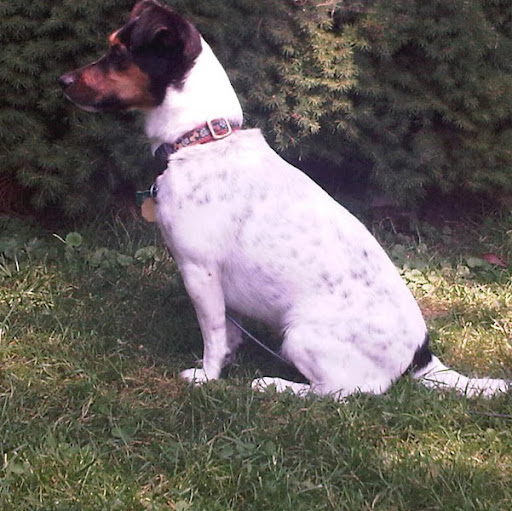Robert H Duffield
age ~81
from Coeur d Alene, ID
- Also known as:
-
- Robert Harley Duffield
- Phone and address:
-
4453 W Industrial Loop, Coeur D Alene, ID 83815
(208)6670528
Robert Duffield Phones & Addresses
- 4453 W Industrial Loop, Coeur d Alene, ID 83815 • (208)6670528
- 3901 Industrial Ave E, Coeur d Alene, ID 83815
- Albany, NY
- Rensselaer, NY
- Arlington, VA
- 6372 Beryl Rd, Alexandria, VA 22312 • (703)6420342
- Hayden, ID
- San Diego, CA
- Tempe, AZ
- 6372 Beryl Rd APT 3, Alexandria, VA 22312 • (703)6420342
Work
-
Company:Troutman Pepper
-
Address:
Specialities
Life Sciences & Biotechnology • Health Effects Litigation • Pharmacy Industry
Isbn (Books And Publications)

Rogue Bull: The Story of Lang Hancock, King of the Pilbara
view sourceAuthor
Robert Duffield
ISBN #
0006345158

Management Infrastructure for the Developing World: A Bibliographic Sourcebook
view sourceAuthor
Robert H. Duffield
ISBN #
0931816343
Resumes

Self Employed
view sourceLocation:
Coeur D Alene, ID
Industry:
Computer Software
Work:
Microteknology Feb 1990 - Feb 2000
Chief Executive Officer
Bega Direct Feb 1990 - Feb 2000
Self Employed
Chief Executive Officer
Bega Direct Feb 1990 - Feb 2000
Self Employed
Education:
University of Iowa
Skills:
Product Development Futurist

Robert Leonard Duffield
view source
Robert Duffield
view source
Robert Duffield
view sourceLocation:
United States
Lawyers & Attorneys

Robert Duffield - Lawyer
view sourceOffice:
Troutman Pepper
Specialties:
Life Sciences & Biotechnology
Health Effects Litigation
Pharmacy Industry
Health Effects Litigation
Pharmacy Industry
ISLN:
919596694
Admitted:
2007
University:
University of Maryland, B.S., 2004
Law School:
Rutgers University School of Law, J.D., 2007
Us Patents
-
Touch Alphabet And Communication System
view source -
US Patent:20170024053, Jan 26, 2017
-
Filed:Mar 7, 2016
-
Appl. No.:15/062330
-
Inventors:ROBERT H. DUFFIELD - COEUR D'ALENE ID, US
-
International Classification:G06F 3/041
G06F 3/023
G06F 3/0488 -
Abstract:A touch alphabet and communication system is provided. The communication system uses a predetermined set of touch gestures, such as fingertip touch patterns performable on keyless touch-sensitive surfaces, to express the user's desired communication. The touch-sensitive surface may be the touch screen display of a computer, tablet device, cell phone, or a touch-sensitive pad, for example. The finger touch patterns are based on a limited set of unique and ergonomically pleasing finger positions that may be performed in a limited area. The touch alphabet allows the user to comprehensively communicate without looking at the communication device, and with just one hand, or in another implementation, with two hands. Thus, a user can comfortably tap an entire alphabet and related functions, with one hand, without having to visualize the user interface surface or hunt for individual keys.
-
Touch Alphabet And Communication System
view source -
US Patent:20150077378, Mar 19, 2015
-
Filed:Nov 24, 2014
-
Appl. No.:14/552350
-
Inventors:ROBERT H. DUFFIELD - COEUR D'ALENE ID, US
-
International Classification:G06F 3/041
-
US Classification:345173
-
Abstract:A touch alphabet and communication system is provided. The communication system uses a predetermined set of touch gestures, such as fingertip touch patterns performable on keyless touch-sensitive surfaces, to express the user's desired communication. The touch-sensitive surface may be the touch screen display of a computer, tablet device, cell phone, or a touch-sensitive pad, for example. The finger touch patterns are based on a limited set of unique and ergonomically pleasing finger positions that may be performed in a limited area. The touch alphabet allows the user to comprehensively communicate without looking at the communication device, and with just one hand, or in another implementation, with two hands. Thus, a user can comfortably tap an entire alphabet and related functions, with one hand, without having to visualize the user interface surface or hunt for individual keys.
-
Adaptive Virtual Keyboard
view source -
US Patent:20130257732, Oct 3, 2013
-
Filed:Mar 29, 2012
-
Appl. No.:13/434670
-
Inventors:ROBERT DUFFIELD - COEUR D'ALENE ID, US
-
International Classification:G06F 3/02
G06F 3/041 -
US Classification:345168
-
Abstract:An adaptive virtual keyboard is provided. In one implementation, a system senses fingertip contact on a sensing surface and generates a virtual keyboard on the sensing surface where a user's hand or hands are placed. The system automatically adjusts placement of the right and left hand parts of the virtual keyboard on the sensing surface in real time to follow drift of the user's hands out of expected ranges, and can distort the geometry of the virtual keyboard to accommodate characteristics of the user's fingertip typing style. The virtual keyboard is composed of approximately 6-20 touch zones, each touch zone representing one or multiple characters or functions. A disambiguator interprets the sequence of touch zones contacted by the user into intended words, symbols, and control characters. The system can optionally display an image of the dynamically adapting virtual keyboard, for visual targeting.
Myspace
Flickr

Robert Duffield
view source
Robert Duffield
view source
Robert Duffield
view source
Robert Kongage Duffield
view source
Robert Duffield
view source
Gerarrd Robert Duffield
view source
Gary Robert Duffield
view source
Robert Duffield
view sourceClassmates

Robert Duffield
view sourceSchools:
Jenkins High School Savannah GA 1961-1965
Community:
Irene Bates, Allen Stroth, Ulric Tony

Robert Duffield (Same)
view sourceSchools:
Weatherly High School Weatherly PA 1980-1984
Community:
Robert Brogan, Daniel Hergert, Jane Wilkerson

Robert Duffield | Sayvil...
view source
Donevan High School, Osha...
view sourceGraduates:
robert duffield (1974-1978),
James Weidmark (1994-1998),
sarah kieth (1996-2000),
Deborah Smith (1964-1968),
teresa was (1972-1976)
James Weidmark (1994-1998),
sarah kieth (1996-2000),
Deborah Smith (1964-1968),
teresa was (1972-1976)

Sayville Junior High Scho...
view sourceGraduates:
Robert Duffield (1961-1965),
Donna Parks (1983-1987),
Glenn Dubois (1967-1971),
Joseph Fantucchio (1984-1988)
Donna Parks (1983-1987),
Glenn Dubois (1967-1971),
Joseph Fantucchio (1984-1988)

Sarnia Collegiate & T...
view sourceGraduates:
Bob Duffield (1953-1957),
Daniel Wood (2003-2007),
Frances Hurst (1997-2001),
Jeff Slate (1983-1987),
Eva Simich (1964-1968),
Heather Wiles (2002-2006)
Daniel Wood (2003-2007),
Frances Hurst (1997-2001),
Jeff Slate (1983-1987),
Eva Simich (1964-1968),
Heather Wiles (2002-2006)

Sonoma State University, ...
view sourceGraduates:
Kathleen Solano (1985-1989),
Ashlee Marks (2006-2010),
Greg Bernarding (1986-1989),
Robert Duffield (1989-1991)
Ashlee Marks (2006-2010),
Greg Bernarding (1986-1989),
Robert Duffield (1989-1991)

Santa Rosa Junior College...
view sourceGraduates:
Robert Duffield (1978-1981),
Shane Mullen (2000-2001),
Colleen M Gard (2006-2010),
Melinda Sturm (1992-1993)
Shane Mullen (2000-2001),
Colleen M Gard (2006-2010),
Melinda Sturm (1992-1993)
Googleplus

Robert Duffield
Work:
My own band - Guitarist/Singer
Tagline:
Im a solo artist.

Robert Duffield

Robert Duffield

Robert Duffield
Youtube
Get Report for Robert H Duffield from Coeur d Alene, ID, age ~81













